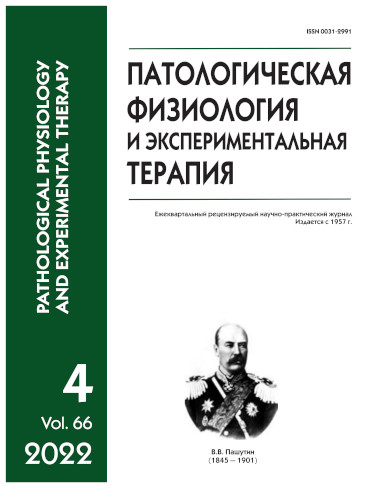Pathophysiological mechanisms of adverse interactions of hypoxia and temperature factors in relation to physical working ability
Abstract
Introduction. The article focuses on quantitative assessment of the interaction of two unfavorable factors, hypoxia and temperature, during their combined effect on the body of laboratory animals. The effects of normobaric and hemic hypoxia and of high and low temperatures were studied. The aim of the study was to quantify the interaction between hypoxia and temperature factors during their combined effect on the body of laboratory animals. Methods. Normobaric hypoxia was produced in a membrane hypoxicator. The oxygen concentration in the hypoxic gas mixture was smoothly adjustable from 2 to 10%. Hyperthermia was modeled by thermostatic maintenance of the air temperature at +40°C and the humidity at 30-60%. Hypothermia was produced in a cold chamber at the air temperature of 5±1°C and the air humidity of 75-80%. Physical performance was tested using forced swimming with a load of 5% of body weight at various water temperatures. The interaction of the factors was assessed by a two-factor analysis of variance for three levels of severity of each factor. Results. The hypoxic and thermal factors exerted independent effects, with hypoxia effects prevailing. The factor interaction was synergistic, moderately severe, complementary, and could underlie the mutual aggravation syndrome. Air hypothermia had a slight effect on the tolerance to hypoxic exposure; the effect of immersion hypothermia was more pronounced. Conclusion. The critical impairment of the functional state under the action of hypoxia and extreme temperature is associated with the activation of the hypothalamic-pituitary-adrenal system, intensification of protein, lipid and carbohydrate catabolism, development of secondary tissue hypoxia, and the formation of mitochondrial dysfunction. The most likely mechanism for the development of mutual aggravation syndrome under the combined action of hypoxia and hyperthermia is impairment of ATP generation in the process of phosphorylating mitochondrial oxidation, which is a common stage in the pathogenesis of various extreme conditions.






